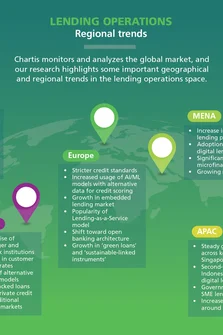<p>The Current Expected Credit Loss (CECL) reporting standards – designed to make Financial Institutions (FIs) address the lifetime risk of their loans – will have a big impact when they take effect in 2018.<br />
Like the International Financial Reporting Standards (IFRS) 9, with which they share many parallels, the CECL standards aim to replace an ‘incurred loss model’ with a more complete and transparent ‘expected loss model’.</p>
<p>For FIs, the main impacts and requirements of CECL will be more data, new models and a sometimes complex interplay of related regulations and stress tests. But they can take some solid steps to address these issues. A strong database structure will help them accumulate, store, organize and use large data sets to model the predictable futures of a wide range of instruments and assets. There are plenty of modeling methodologies to choose from, but FIs should be careful in their selection. Investing the time, effort (and money) in finding the one that suits them best will bring considerable benefits in the longer term.</p>
<p>And while CECL’s data requirements are new to reporting standards, similar requirements already exist in related regulations affecting the same firms. The systems that FIs will have to use for CECL may share similar structures and benefits of scale with those designed for other industry regulations and requirements, such as:</p>
<ul>
<li>The Comprehensive Capital Analysis and Review (CCAR).</li>
<li>Dodd-Frank Act Stress Test (DFAST).</li>
<li>European Banking Authority (EBA) stress tests.</li>
<li>IFRS 9 (if FIs operate within the jurisdictions for both sets of standards).</li>
</ul>
<p>But many FIs have made a common mistake when implementing systems to address transformative regulations: they assume that their changes can be pulled together at the last minute. They must learn, especially with principles-based regulations like CECL, that the methods and systems they need will take time to iterate and adapt from their initial form to the level of compliance the standard-setting bodies deem acceptable. To ensure they are not in breach of the CECL principles when their deadline hits, FIs must address these issues sooner rather than later.</p>
<p>In this Spotlight report we highlight:</p>
<ul>
<li>Some of the major areas addressed by the forthcoming CECL reporting standards.</li>
<li>The issues FIs will have in meeting the necessary requirements.</li>
<li>What FIs need to do to comply successfully with the CECL standards.</li>
</ul>
<p><em>Chartis will publish a more detailed analysis of the impact of CECL – and technology vendors’ response to it – later in 2017.</em></p>
Only users who have a paid subscription or are part of a corporate subscription are able to print or copy content.
To access these options, along with all other subscription benefits, please contact info@risk.net or view our subscription options here: http://subscriptions.risk.net/subscribe
You are currently unable to print this content. Please contact info@chartis-research.com to find out more.
You are currently unable to copy this content. Please contact info@chartis-research.com to find out more.
Copyright Infopro Digital Limited. All rights reserved.
As outlined in our terms and conditions, https://www.infopro-digital.com/terms-and-conditions/subscriptions/ (point 2.4), printing is limited to a single copy.
If you would like to purchase additional rights please email info@chartis-research.com
Copyright Infopro Digital Limited. All rights reserved.
You may share this content using our article tools. As outlined in our terms and conditions, https://www.infopro-digital.com/terms-and-conditions/subscriptions/ (clause 2.4), an Authorised User may only make one copy of the materials for their own personal use. You must also comply with the restrictions in clause 2.5.
If you would like to purchase additional rights please email info@chartis-research.com


